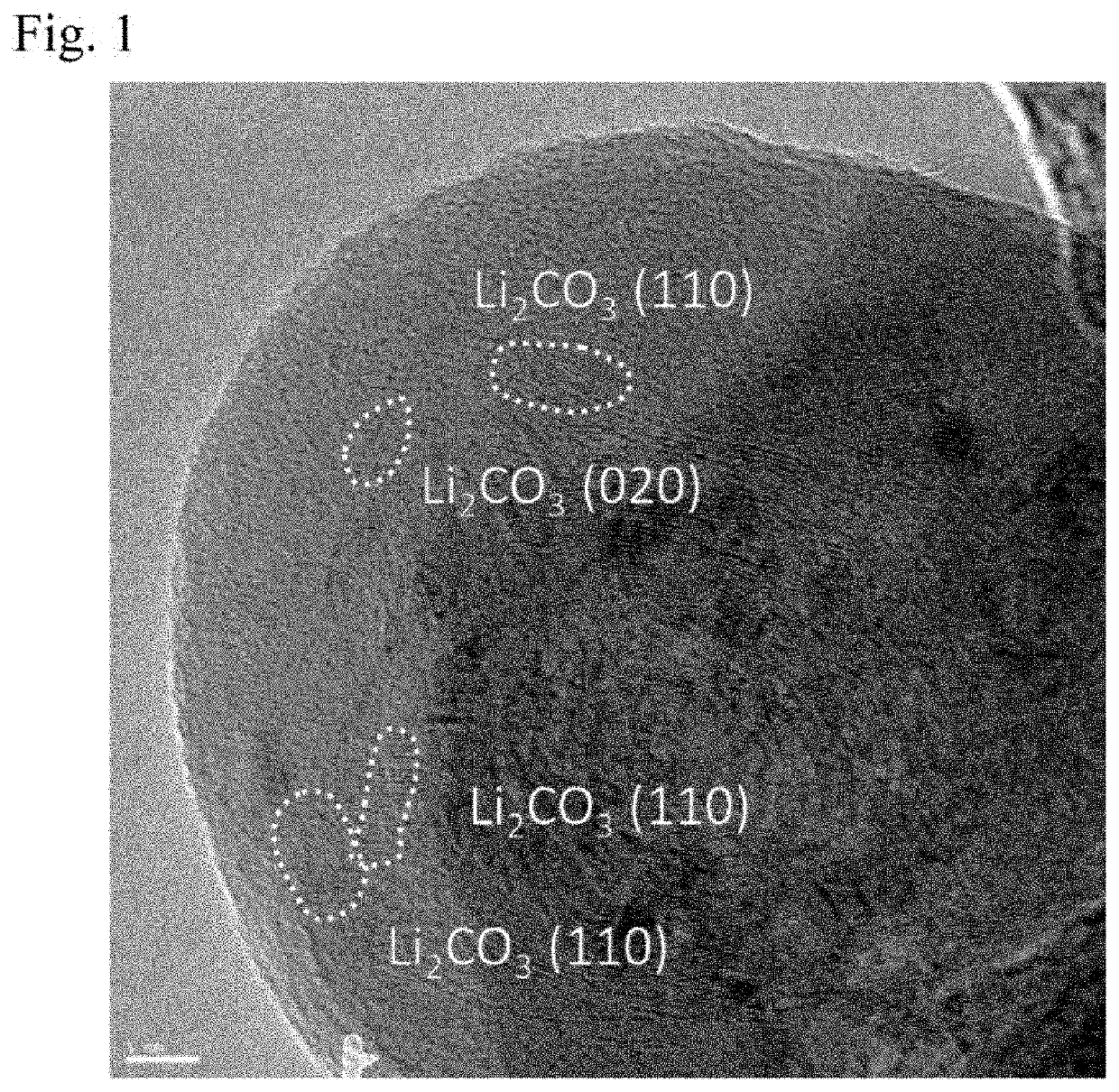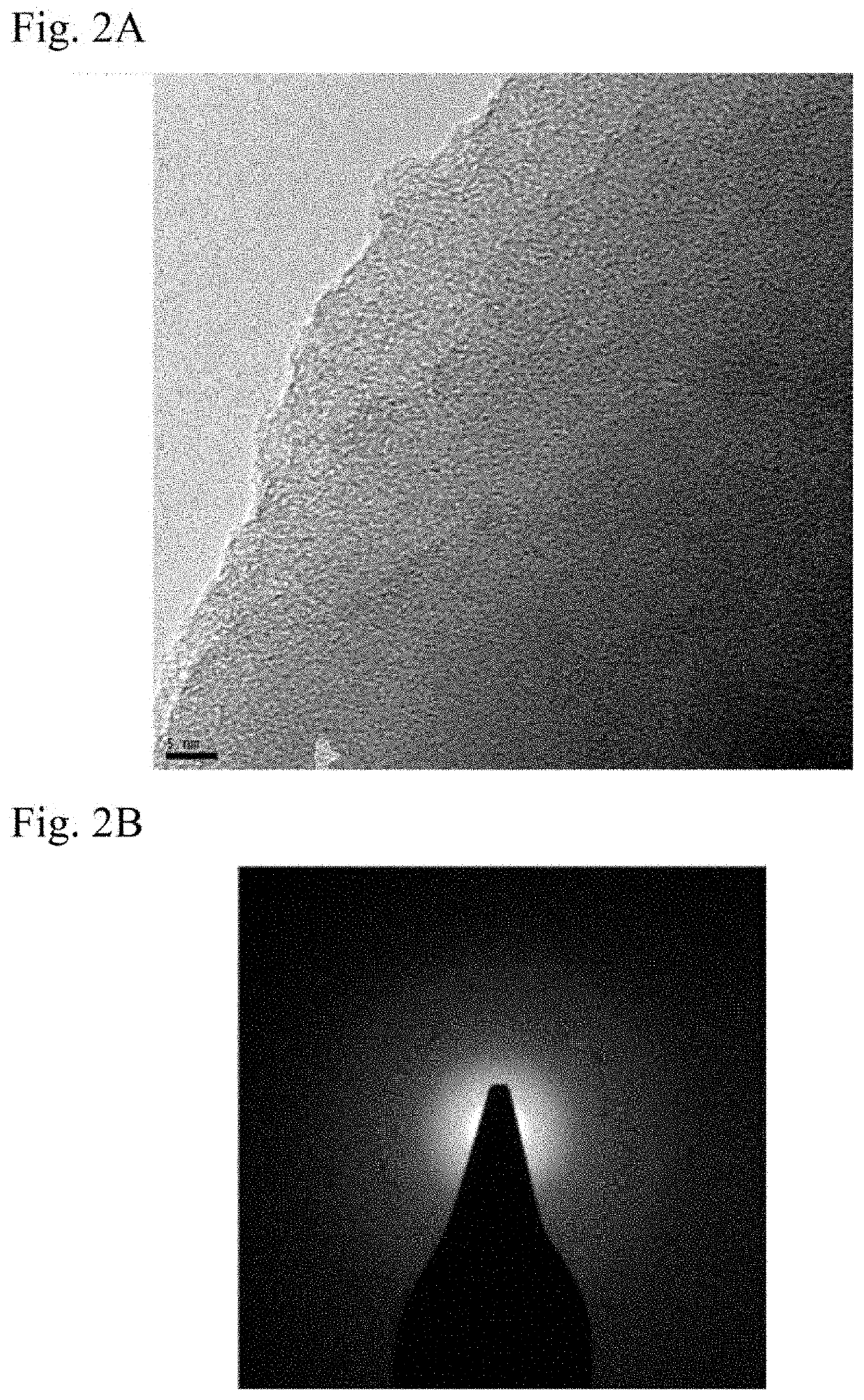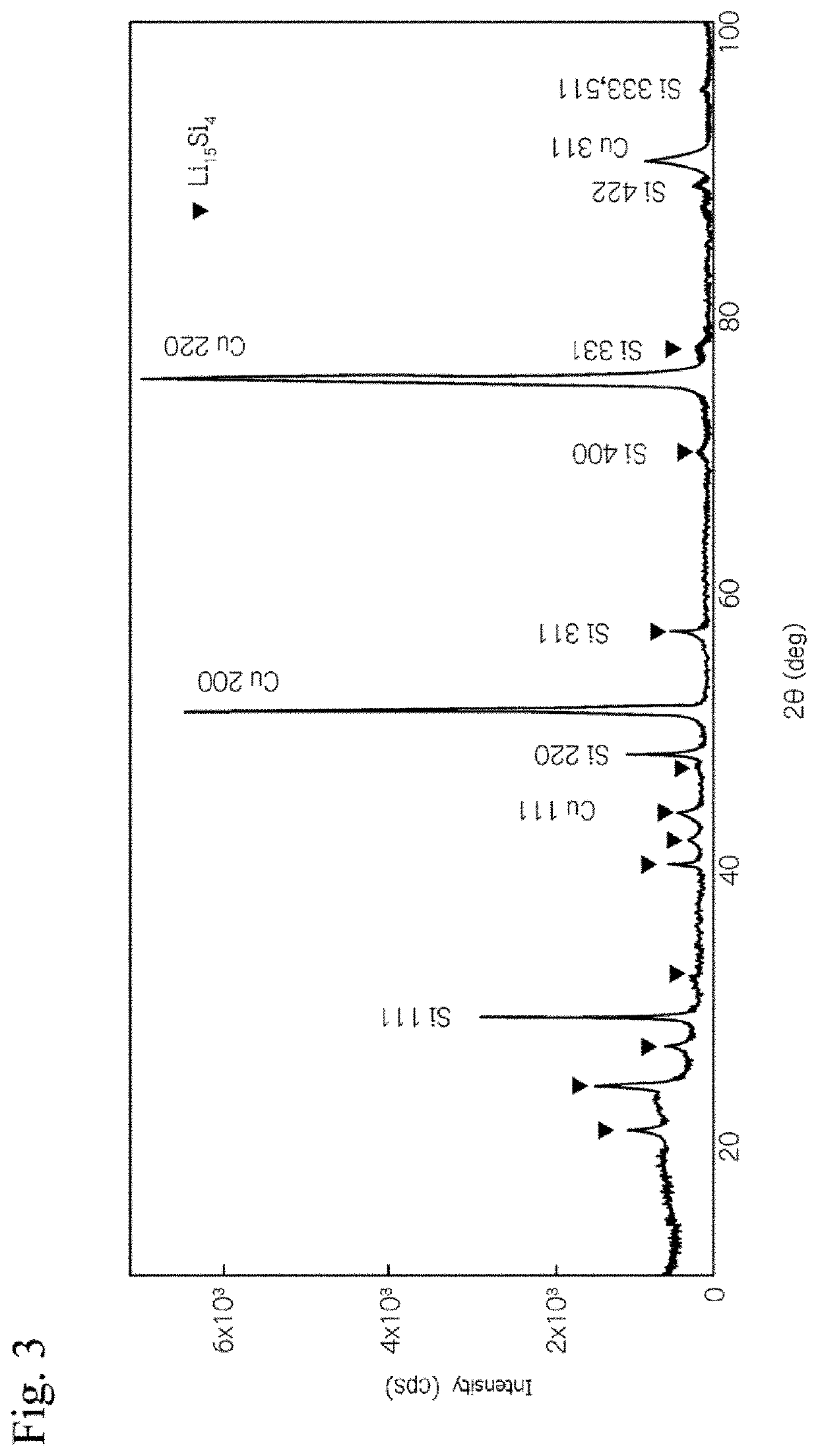Negative electrode for secondary battery, secondary battery, and manufacturing methods thereof
- Summary
- Abstract
- Description
- Claims
- Application Information
AI Technical Summary
Benefits of technology
Problems solved by technology
Method used
Image
Examples
example 1
(Preparation of Secondary Battery)
[0120]7.0 g of Si powder, 1.5 g of acetylene black, and 15 g of an aqueous solution of 10% sodium polyacrylate having an average molecular weight of 450,000 were weighed and kneaded while adding purified water and uniformly mixing to obtain a mixture. The viscosity was adjusted by further adding purified water to this mixture, and a negative electrode slurry for coating a negative electrode active material layer was prepared. This slurry was coated with a knife roll coater at a coating thickness of 100 μm and a width of 130 mm on a Cu foil having a thickness of 20 μm, and dried at 80° C. Subsequently, the coating was performed at a thickness of 30 μm on a Cu foil serving as a current collector by roll pressing. Through the forming step of such a negative electrode active material layer, a negative electrode in which the negative electrode active material layer 3′ having a gray color and Si as an active material is provided on the current collector 1...
example 2
(Preparation of Coated Negative Electrode 2-1)
[0130]A negative electrode ink for coating was prepared by weighing 7.0 g of Si powder, 1.5 g of acetylene black, and 15 g of an N-methyl pyrrolidone solution of 10% polyvinylidene fluoride having an average molecular weight of 50,000, and further adjusting the viscosity by adding N-methyl pyrrolidone. This ink was coated with a knife roll coater at a coating thickness of 100 μm and a width of 130 mm on a Cu foil having a thickness of 20 μm, and dried at 80° C. Subsequently, by roll pressing, a negative electrode active material layer having a thickness of 40 μm was formed on the Cu foil serving as the current collector to obtain a coated negative electrode 2-1 including Si as the active material and polyvinylidene fluoride as the binder.
(Preparation of Coated Negative Electrode 2-2)
[0131]A negative electrode ink for coating was prepared by weighing 7.0 g of Si powder, 1.5 g of acetylene black, and 5 g of an aqueous solution of 50% polya...
example 3
(Preparation of Secondary Battery)
[0138]7.5 g of rubeanic acid, 1.5 g of vapor-grown carbon fiber (VGCF), and 1.0 g of polytetrafluoroethylene resin binder were weighed and kneaded while adding purified water and uniformly mixing. The viscosity was adjusted by further adding ion exchange water to this mixture, and a slurry for coating a positive electrode was prepared. A positive electrode including rubeanic acid and VGCF was prepared by coating this slurry with a knife roll coater at a coating thickness of 100 μm and a width of 130 mm on an Al foil having a thickness of 20 μm, drying the coating at 80° C., and subsequently punching the material into a circular shape having a diameter of 12 mm.
[0139]The positive electrode prepared as described above was placed on a positive electrode case of a coin-type battery, and a 20-μm-thick separator composed of a porous polypropylene film was laminated thereon. Furthermore, a predoped Si negative electrode prepared by the same method as in Ex...
PUM
 Login to View More
Login to View More Abstract
Description
Claims
Application Information
 Login to View More
Login to View More - R&D
- Intellectual Property
- Life Sciences
- Materials
- Tech Scout
- Unparalleled Data Quality
- Higher Quality Content
- 60% Fewer Hallucinations
Browse by: Latest US Patents, China's latest patents, Technical Efficacy Thesaurus, Application Domain, Technology Topic, Popular Technical Reports.
© 2025 PatSnap. All rights reserved.Legal|Privacy policy|Modern Slavery Act Transparency Statement|Sitemap|About US| Contact US: help@patsnap.com



